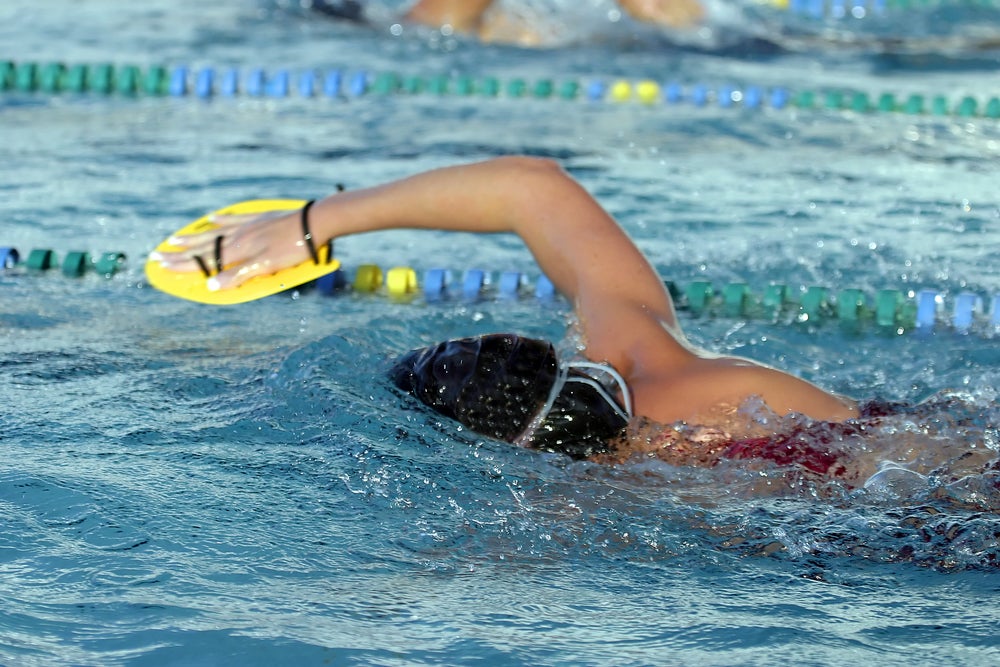Ask Coach Sara: The Best Drill For A Strong Pull

Photo: <a href=http://shutterstock.com>Shutterstock.com</a>
Your questions about swimming as a triathlete, answered by coach and professional triathlete Sara McLarty.
Q: What’s the best drill to promote a strong pull phase?
A: Single-arm drills are the best way to focus on every phase of the stroke, including the pull. The non-swimming arm should be kept at your side to allow and promote torso rotation while performing the drills. The basic version is with no equipment. Start with 6×25, alternating arms each 25. A more advanced single-arm drill is performed with a paddle to provide a bigger surface area during the pull. While the focus is on the pull during these drills, don’t forget to rotate your torso enough that your non-stroking shoulder pops out of the water.
RELATED: Identify And Conquer Your Swim Weakness
Q: Hip-driven or shoulder-driven for long-distance open-water swimming?
A: This is a great question because the best answer is a hybrid of the two methods. A typical hip-driven freestyle is predominantly used for longer distance events because it allows the stronger torso and core muscles to be utilized while the shoulder-driven method is universal in the 50-meter sprint because it allows for a high stroke rate. Analysis of open-water swimmers and triathletes found that a high stroke rate is needed to be successful in the open water because the water can be moving and turbulent from currents, wind, waves and other swimmers. Endurance open-water athletes use a hip-driven technique to utilize bigger and stronger muscles to get through the 1500-meter to 10K events.
RELATED: Two Important “Coupling” Motions That Impact Your Swim Speed
Q: My training plan has me using a pull buoy often. What are the advantages to using one? Am I supposed to be kicking while using it?
A: I am cautious of swim training that overuses a pull buoy because it does not let you develop a natural stroke technique and can prevent the timing and connection between stroke and kick. Some coaches encourage use of a buoy when prepping for wetsuit-legal events. However, the pull buoy hinders the ability to kick and inhibits proper torso rotation. Many wetsuit manufacturers have developed neoprene shorts to provide greater flotation of the lower body but still allow the legs to move in time with the arm stroke. If you ever have questions regarding your training plan, ask your coach! Athlete-coach communication is key and a coach should provide a reason for his or her training methods.
RELATED: Pull Buoy For Beginners
Pro triathlete and swim coach Sara McLarty has 25-plus years of experience and knowledge about swimming mechanics, efficiency and technique.